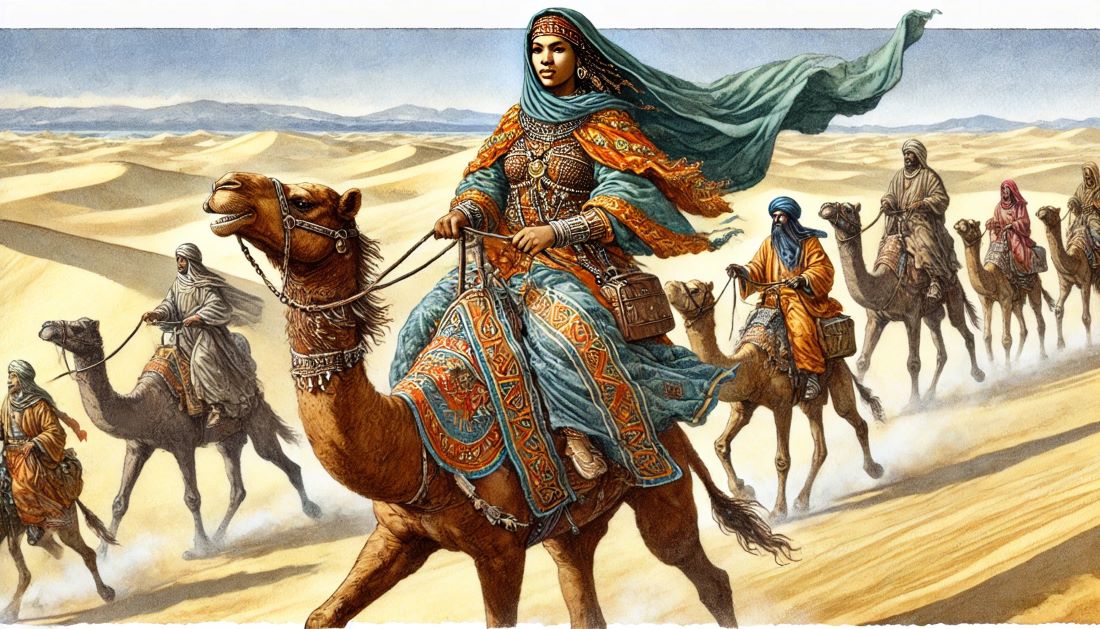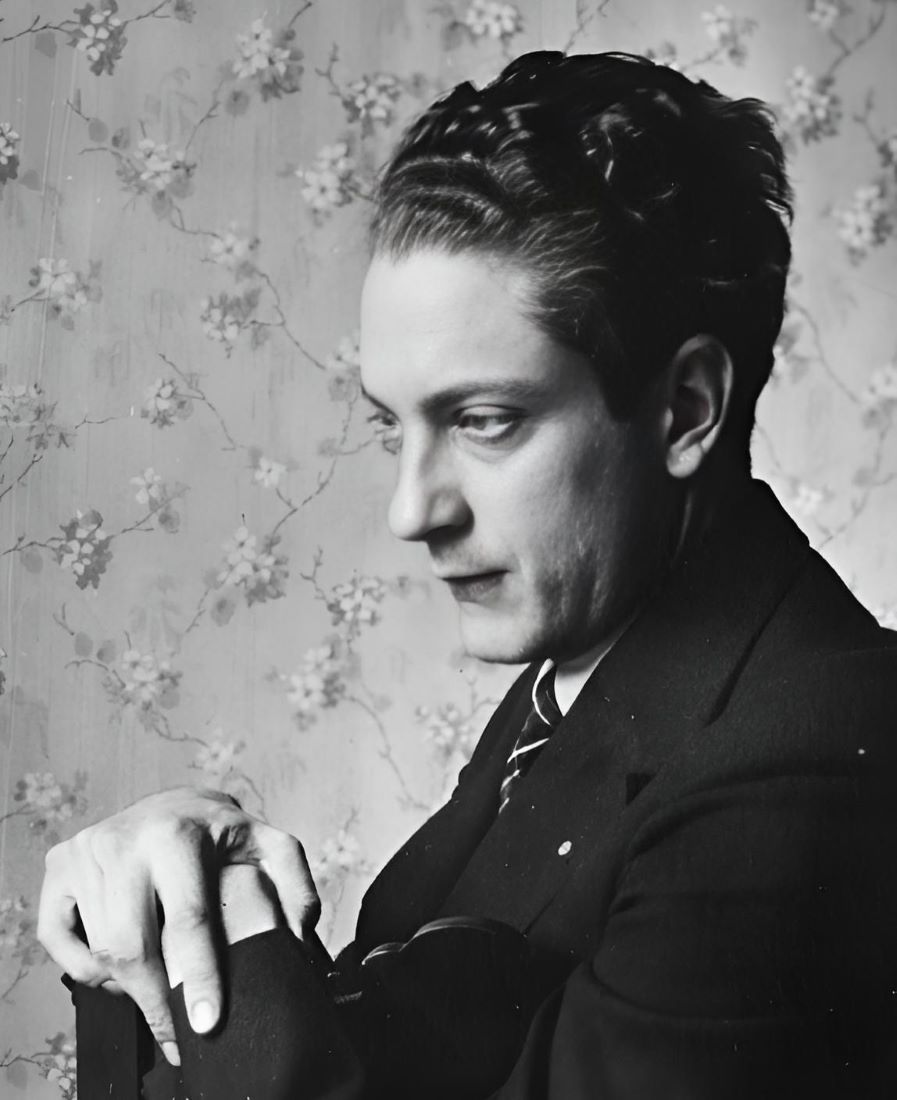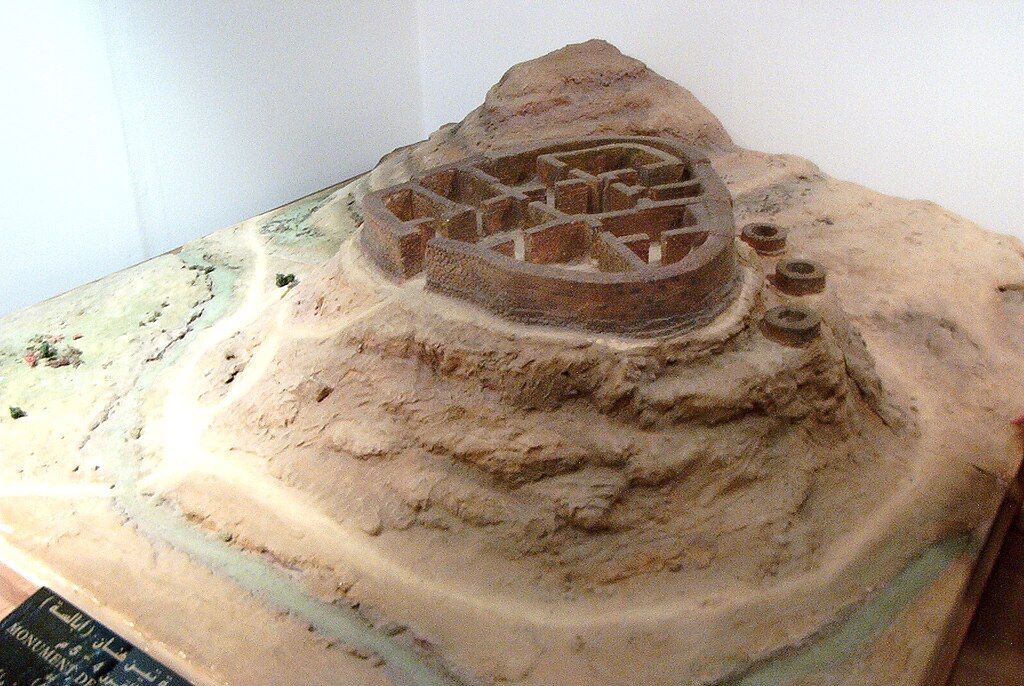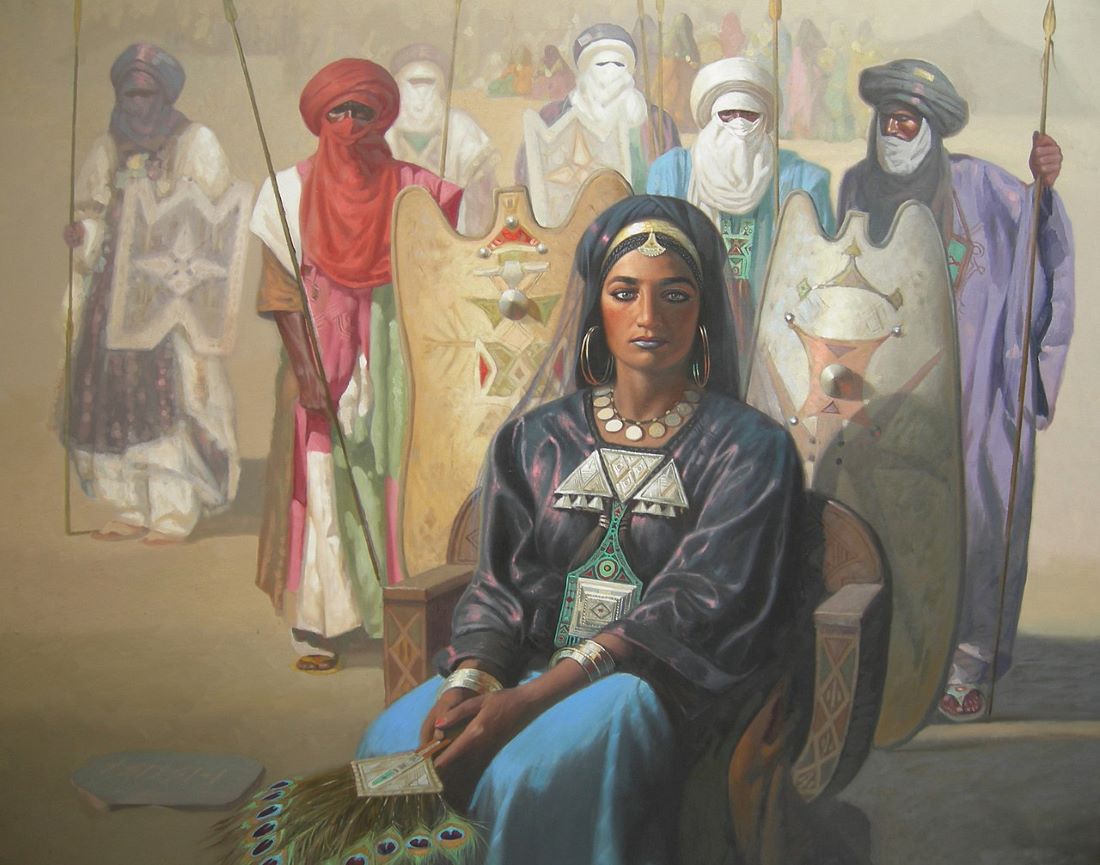Tin Hinan is the legendary queen of the Tuareg people, believed to have lived in the 4th century AD. Her existence transitioned from legend to reality in the first half of the 20th century, thanks to archaeological discoveries that provided evidence supporting the historical basis of her story. With the development of critical historiography in the late 18th and early 19th centuries, historians tended to dismiss legends as mere myths. This was the case with the story of Troy, and similarly with Tin Hinan. However, it was an amateur archaeologist, Byron Khun de Prorok, who participated in the discovery of the tomb of this legendary queen.
Legends of Tin Hinan
The legends of Tin Hinan, revered as “Queen of the Hoggar,” depict her as a foundational figure for the Tuareg people. According to Tuareg oral tradition, Tin Hinan was a fugitive princess from the northern Sahara who led her followers to the Hoggar region. The stories describe her overcoming great hardships, including discovering vital grain in desert anthills to sustain her people. In some legends, she is portrayed as having a daughter or granddaughter named Kella, and these descendants are said to be the ancestors of the Tuareg tribes. Other versions suggest she had three daughters with totemic names, who became tribal ancestors.

The Discovery of Tin Hinan’s Tomb
Byron Khun de Prorok was an amateur archaeologist with a passion for exploring the ancient mysteries of North Africa. In 1925, driven by a fascination with the legends of Tin Hinan, he embarked on an expedition to the Hoggar Mountains in present-day Algeria. De Prorok’s journey was fueled by a desire to uncover the truth behind the legendary queen, and his efforts led to the discovery of a tomb that many believe belonged to Tin Hinan.

The tomb of Tin Hinan, located near Abalessa in the Sahara, was opened in 1925 with the support of the French army. Inside, de Prorok and his team found the skeleton of a woman, believed to be Tin Hinan, on a wooden litter. The body was accompanied by heavy gold and silver jewelry, including silver and gold bracelets, a gold ring, and a complex necklace of gold and pearls. Other funerary objects included a “Venus” statue, a glass goblet, barbed iron arrowheads, an iron knife, and a gold foil imprinted with a Roman coin of Constantine I. The tomb also contained Tifinagh inscriptions, adding further cultural significance to the findings.

The story of Tin Hinan reminds us that legends should not be dismissed so readily. In every legend, there is often a kernel of truth waiting to be uncovered. The discovery of Tin Hinan’s tomb serves as a testament to the enduring power of myth and the possibility that even the most fantastical stories may have roots in reality.
Historical Challenge: Can You Conquer the Past?
Answer more than 18 questions correctly, and you will win a copy of History Chronicles Magazine Vol 1! Take our interactive history quiz now and put your knowledge to the test!

